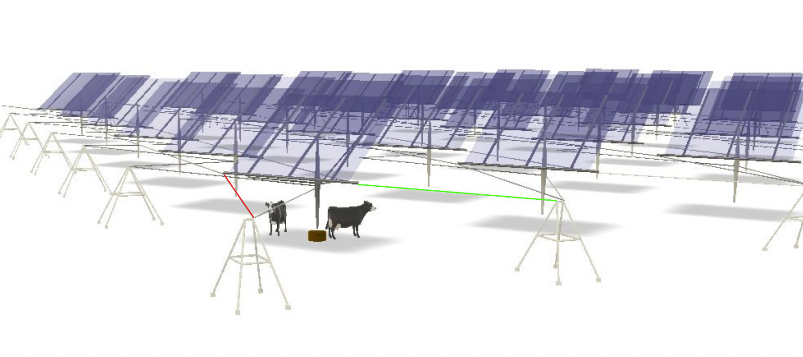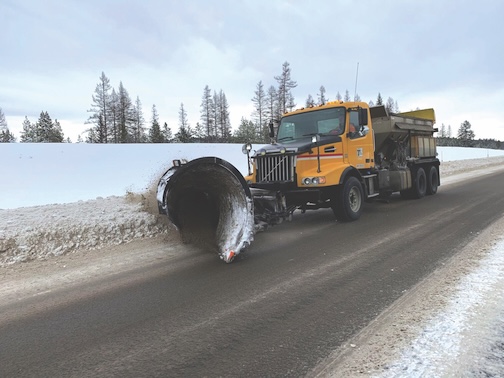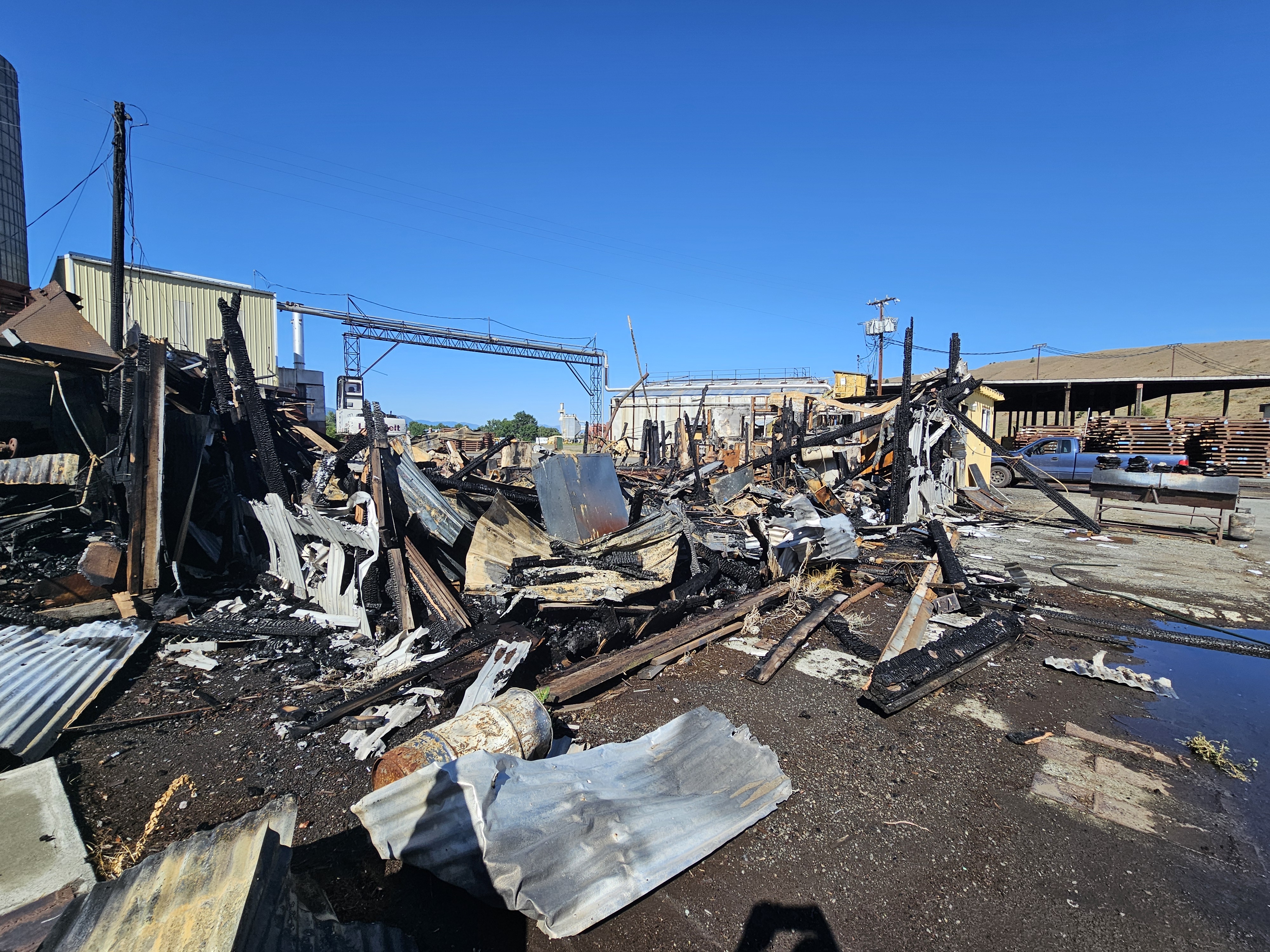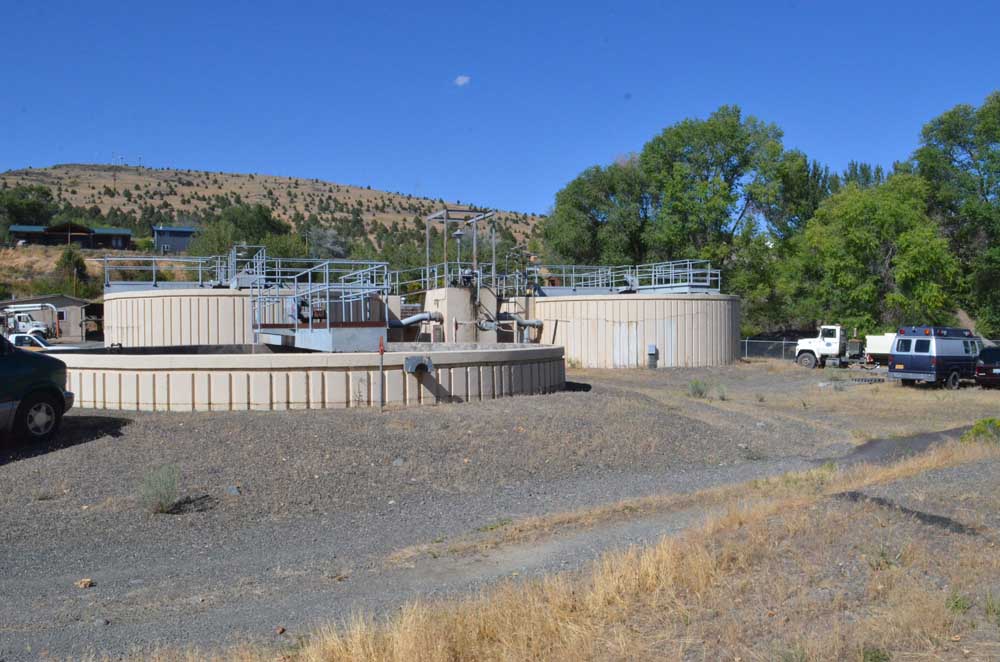Grant County rancher partners with solar energy firm for first large-scale agrivoltaic project in the nation
Published 6:15 am Wednesday, March 1, 2023

- This artists’s rendering illustrates the cable stays that hold the Rute SunTracker solar panels 9 feet off the ground while providing dual-axis capabilities that allow the panels to both follow the sun and tilt to shed snow.
A Grant County rancher and a solar power company have partnered for a new project that could allow large-scale solar energy production and cattle ranching on the same land for the first time in Oregon — or anywhere in the country.
Trending
The dual-use solar project is planned for about 8 acres on the sprawling Southworth Brothers Ranch owned by Jack and Teresa Southworth in Bear Valley, about 20 miles south of John Day along Highway 395. The project, which aims to generate 1.5 megawatts of electricity when fully completed in fall 2024, will be placed next to an Oregon Trail Electric Cooperative substation adjacent to the ranch, with OTEC expected to buy power from Bear Valley Solar Pasture for the grid.
The Grant County Planning Commission unanimously approved the project at its meeting on Thursday, Feb. 23. Bear Valley Solar Pasture manager David McFeeters-Krone said it will be the first utility-scale agrivoltaic project to allow cattle grazing on the same land in the United States.
“OTEC is very aware of the project and we hope to finalize our interconnection agreement with them next month,” said McFeeters-Krone.
Trending
Joe Hathaway, a spokesman for OTEC, said the power company is aware of the project and is currently in early discussions with Bear Valley Solar Pasture regarding the project but an agreement has yet to be reached.
“OTEC believes this is a unique concept and we’re interested to see it emerge in Grant County,” Hathaway said.
The new SunTracker agrivoltaic technology, managed by the Bear Valley Solar Pasture development company and supplied by Portland-based Rute Foundation Systems, will allow cattle to graze under solar panels which will be supported 9 feet above the ground by a cable system. The panels will also be able to track the sun and angle themselves to avoid snow buildup.
“We are very excited to bring this solution to rural America, and we are delighted to have it start in our home state in Grant County,” said McFeeters-Krone.
McFeeters-Krone said traditional fixed solar panels that do not allow for any other land use can have a negative impact on agricultural jobs because they use land that would normally be used to grow crops or raise livestock. With the new agrivoltaic technology allowing for dual land use for energy production and agriculture, rural jobs remain, he said.
Southworth Brothers Ranch, founded by Jack’s great-grandfather William Sawyer Southworth in 1885, covers more than 12,700 acres of deeded land with additional Forest Service grazing allotments totaling about 30,000 acres in the Bear Valley area north of Seneca. Partnering with purveyors of the new technology also means a new revenue stream for Southworth. The company will pay Southworth for use of the land through a long-term lease.
“The great thing about agrivoltaics is it offers you (a way) to augment your income, without making a hard choice about changing your way of life and negatively affecting the community,” McFeeters-Krone said.
Southworth said he and his family were interested in diversifying their income stream and had read about Oregon State University testing the use of agrivoltaics to allow for the raising of sheep and crops on the same land as solar power generation.
“I wanted to know if there were any that had worked with cattle because that’s what we raise here in Bear Valley, so I reached out to Oregon State research with the sheep and they put me in touch with Rute Foundation Systems, which is based out of Portland,” Southworth said.
“We hope it’s on our land for the foreseeable future, and we hope it’s a permanent thing that works well with cattle grazing,” Southworth said. “We have plenty of sunlight on our ranchland. What we lack is moisture, and hopefully the shade will help us conserve moisture and allow us to grow grass for a longer period of time in the summer.”
The shade created by the solar panels would not only offer cattle respite from the sun in the hot summer months, but also help retain moisture in the ground to help grass grow better, he said.
“In arid environments, it preserves water in the soil during the hot summer months, and that extra moisture appears to encourage additional grass growth,” McFeeters-Krone said.
Teresa Southworth, Jack’s wife and co-owner of the ranch, attended the planning commission meeting on Thursday and is looking forward to the additional benefit of shade.
“We actually consider it as beneficial to our way of life because there aren’t any trees out in that valley, so any kind of shading is going to be beneficial to not just the plants but also the animals,” she said.
“There’s so much land in the West you really can’t do anything else with other than cattle grazing, and with the potential diversification of grazing land and the ability to have another revenue stream without removing (agricultural land use) … if anything, we’re probably going to be improving the grass under these panels,” she said.
Grant County Judge Scott Myers said there are no other large-scale solar power projects in the county, and he believes the Bear Valley venture will be a boon to the region if it proves solar power can work with existing land uses.
“I know we get more sun than a lot of Oregon, and if we can harness it and use it, and as long as it can coexist with the land use that’s already here, I think it’s a good deal all the way around,” Myers said.
McFeeters-Krone said Rute is in talks with developers in Texas to install the company’s agrivoltaic systems there and hopes to roll out solar pasture projects throughout the United States and internationally in the future.
“The thing about cattle in the United States is that there is 10 times more rangeland devoted to cattle as opposed to sheep and all other rangeland, so it’s a great untapped market,” he said.









